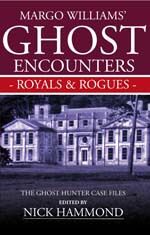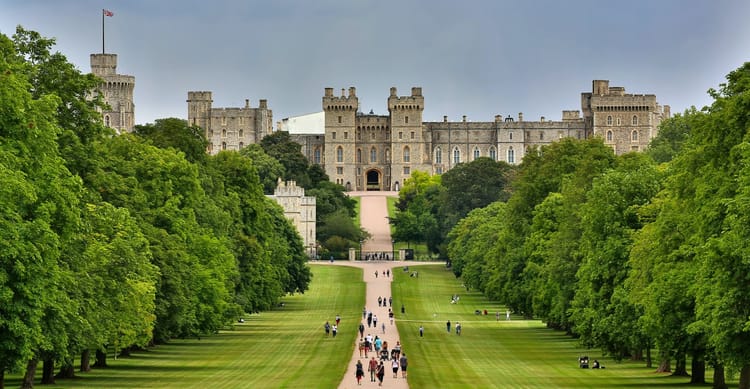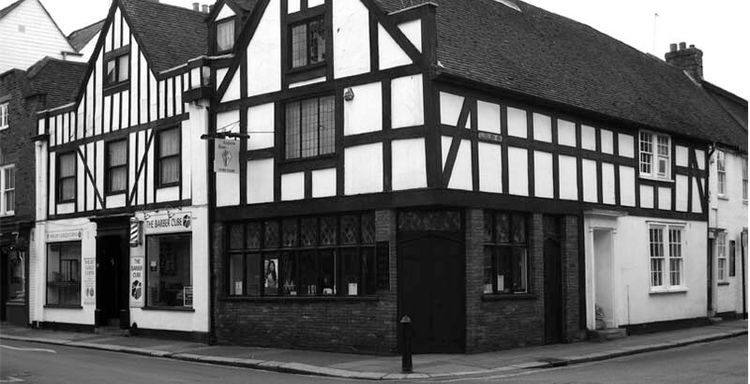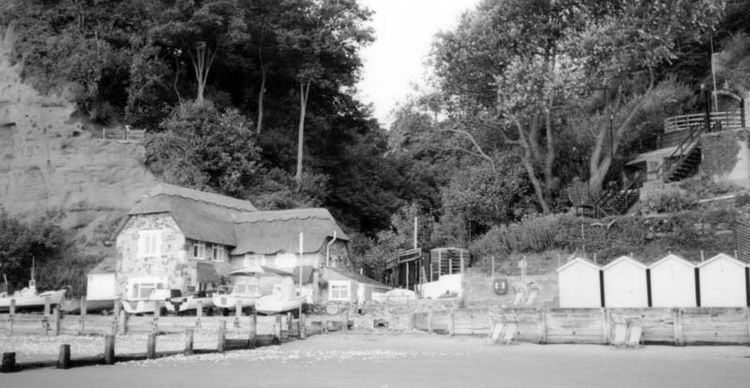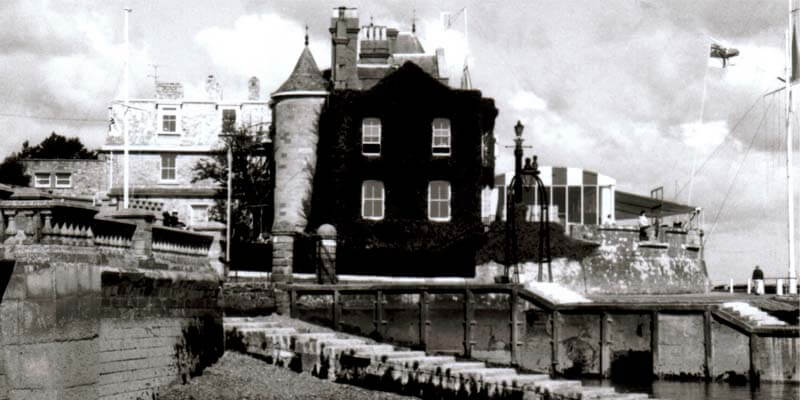Ghosts of Versailles, Paris. Trianon Palace, with Margo Williams
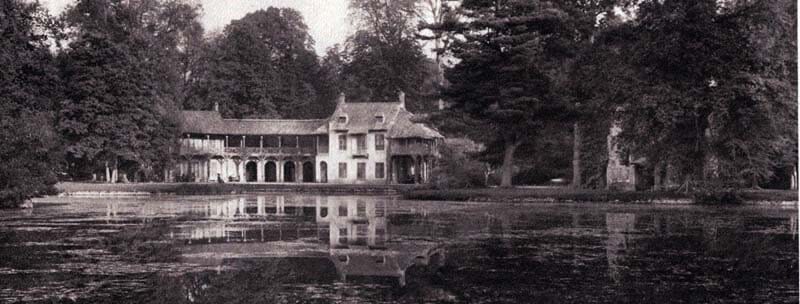
An Adventure in Time
ENGLAND is not the only nation to have forcibly removed its head of state, France did so in the 1700s. For many angry French citizens cake caused that consequence.
The moment happened at twelve minutes past noon, during Wednesday, October 16th 1793 in a Parisian city square crowded with spectators eager to watch the 37-years-old Queen of France depart for heaven.
Some among the jeering cheering crowd probably sighed oooh! after Marie Antoinette said "adieu."
A surprise then, for two English university academics wandering the grounds of Versailles palace on the outskirts of Paris, one hundred and eight years later, to see the queen sitting in the garden; sketching as if nothing had happened.
The ghostly encounter lasted for quite some time, and the two women made notes and published a detailed report of the incident.
The Sun King's Palace
Versailles was the beloved home palace of King Louis 14th; seat of French government from spring 1682 throughout his long reign. An enormous palace park complex. French Baroque; towering stone, glass, gold, trompe-l’oeil and curving lines.
Its elegant state rooms gilded and scrolled; stucco arabesques by the finest artists. Its ceilings masterpiece paintings of skies peopled with the old Gods; a design theme which continues in the Sun King’s vast palace garden.
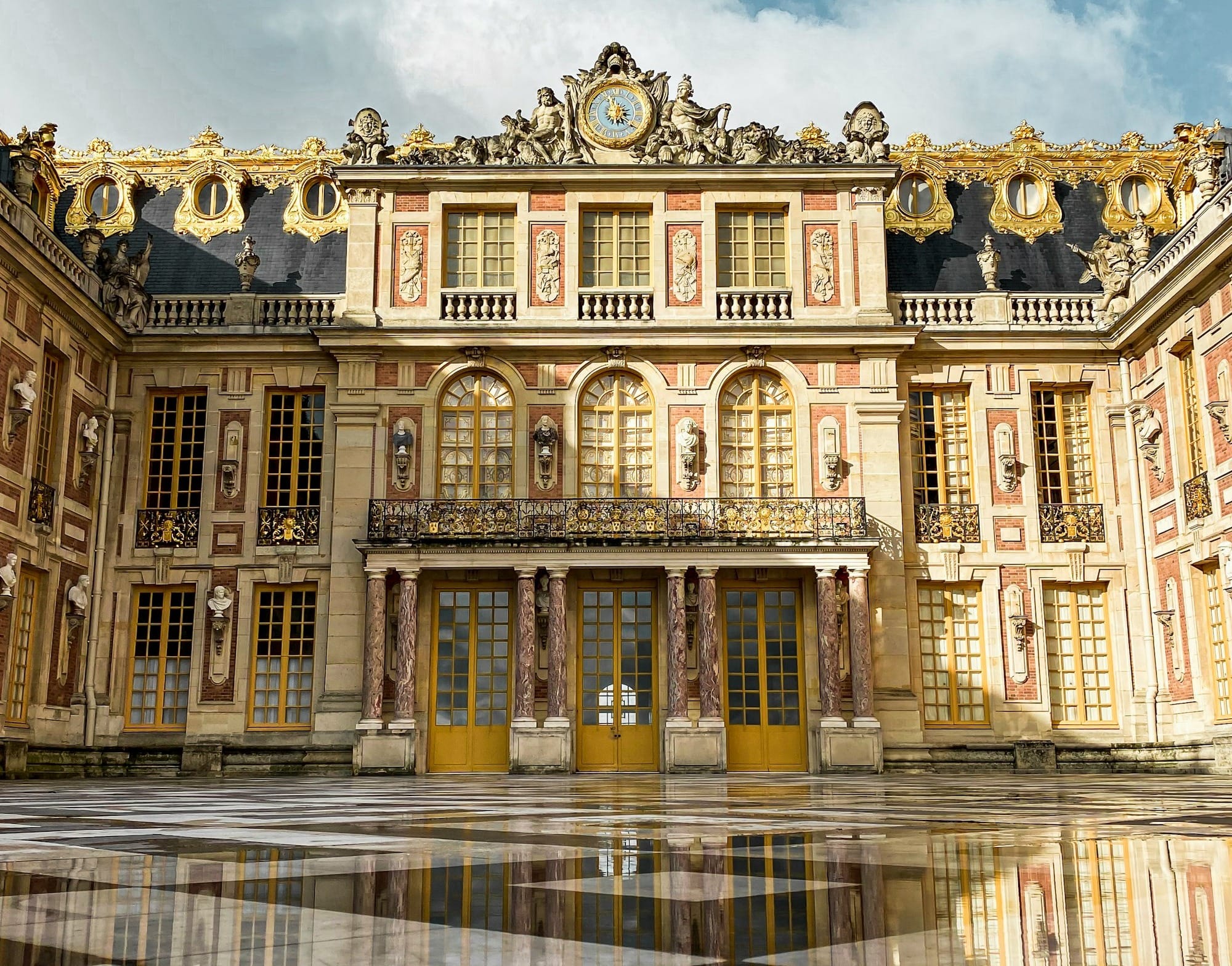
VERSAILLES ACCOMMODATES two secondary palaces: the Grand Trianon and the Petit Trianon which King Louis 16th presented to wife Marie Antoinette after their palace marriage in May 1770.
In the Trianon gardens, paths snake and twist and it is easy to lose the way to her uniquely bizarre contribution to Versailles, the rustic country hamlet.
Gathered round a pond are full-sized play-buildings, a dairy, a fishery, a mill and the picture-postcard lovely Queen’s Cottage with rose-carved verandah and spiral staircase. The rustic hamlet is a Hollywood scene-set illusion of a perfect peasant village, frozen in time.
King and Queen of the Enlightenment
Louis and Marie Antoinette presided over France’s Age of Enlightenment. A vibrant period of scientific discovery and advance in mathematics, medicine and astronomy.
Jean-Baptiste Lamarck anticipated Charles Darwin’s theory of evolution; Georges Cuviet introduced the threat of extinction. Charles Messier’s astronomical observations cataloguing galaxies and star clusters inspired others to explore the mysteries of time and space; the true nature of our place in the universe.
Indigenous peoples from the New World crossed the Atlantic to share their experiences of personal freedom and how to live well without money.
The king of France also wanted answers to money mysteries, closer to home.
As with most tragedies things started small then grew too big, like the queen’s gambling debts. To the bewilderment of her husband, Queen Marie Antoinette launched beribboned sheep to the skies courtesy of the Montgolfier Brothers’ balloons.
Seemingly careless that beyond the palace walls, poor communities starved; their resentment fed by rumours of how the queen celebrated lavish parties for private guests.
And when on being informed by the footman that guests were complaining there were no savouries left, who wouldn’t have heard her say: ‘Peasants! Let them eat cake.’?
The Ghost Encounter
During Monday 5th October 1789 a Paris mob pushed open the palace gates and the royal family fled Versailles never to return, or so it seemed.
Until Saturday 10th August 1901, a hundred and eight years after the queen’s execution, when Charlotte Anne Moberly and Eleanor Jourdain, principal and prospective vice-principal of St. Hugh’s College in Oxford, saw the long-deceased Queen of France, at leisure sketching in the garden.
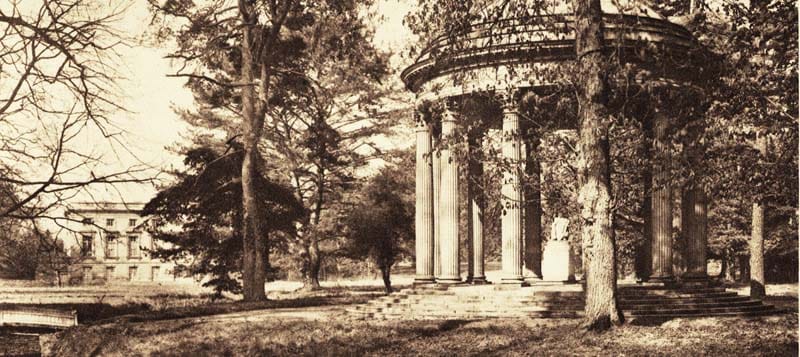
CHARLOTTE AND ELEANOR found themselves lost in the garden; following a path they came to a hamlet of cottages where Charlotte saw a woman shaking a cloth through a window and presumed Eleanor, fluent in French, would ask for directions; but no.
She seemed completely unaware of the woman even though she stared directly at the window.
Along the path stood two men, gardeners she assumed and headed toward them but on close approach realised they looked too well-dressed. They wore expensive grey-green coats and three-cornered hats, of the sort long since dropped from Paris fashion.
They carried staffs not hoes. Jourdain saw them too and heard one call: “Tournez à droite!” Advisedly, she turned right, passed another cottage. She waved to a girl and woman dressed in old-fashioned clothes, stood in the doorway.
Both of whom were invisible to Charlotte.
“Everything suddenly looked unnatural,” wrote Eleanor, later recalling the moment in her notebook. “Unpleasant, even the trees seemed to become flat and lifeless, like a wood worked in tapestry. There were no effects of light and shade, no wind stirred the trees.”
They next arrived at a small building where a man sat dressed in cloak and big hat. This encounter too was noted. “The man slowly turned his face, which was marked by smallpox; his complexion was very dark,” said Charlotte of his reaction to their arrival.
“The expression was evil and yet unseeing and though I did not feel that he was looking particularly at us, I felt a repugnance to going past him.”
The Ghost in the Garden
A stranger in a big sombrero hat hurried toward them, somewhat more sweet-featured, so they described. Big dark eyes, crisp curling dark hair.
“Mesdames, mesdames, there is no need to pass by there, but go there and you will find the house.” He pointed in another direction.
“He was so handsome,” said Charlotte. “And the effect of the hair was to make him look like an old picture.” She thanked him for his help only to receive a peculiar smile as they followed where he directed.
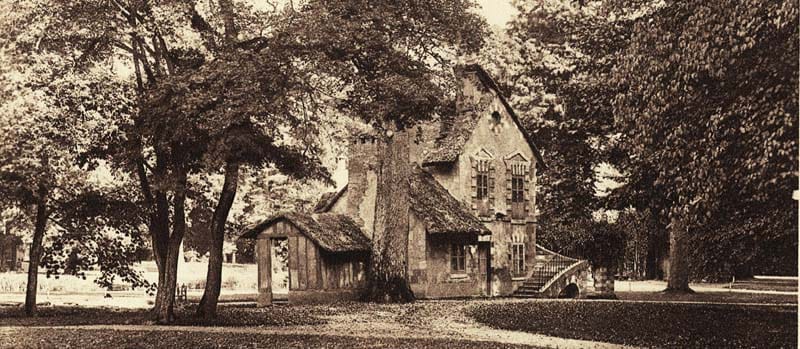
THE COUPLE CROSSED a small rustic bridge in the gardens of the Petit Trianon. Charlotte saw a woman sat on the grass, sketching, and so noted a description of the artist.
“It was not a young face and (though rather pretty) it did not attract me. She had on a shady white hat perched on a good deal of fair hair that fluffed around her forehead.
First I thought she was a tourist, but that her dress was old-fashioned and rather unusual. I looked straight at her, but some indescribable feeling made me turn away.”
Mysteriously, the sketching woman so close remained invisible to Eleanor.
The two returned to England; separately wrote accounts of all that happened, only to be mystified more deeply by the experience. For some of the buildings and garden features they passed that day were missing on contemporary plans of the palace, but were present on those dating to 1789.
The principal and elect vice principal of the Oxford college accurately described buildings and farm equipment that were not there at the time.
The two well-dressed men in tricorn hats were not gardeners, but identified wearing Swiss Guard uniform livery issued in the late 18th century not early 20th. They discovered a painting of Marie Antoinette, the outfit she wore matched Charlotte’s description.
They also identified the dark ‘pock-marked man’. Portraits confirmed him to be the dangerous Comte de Vaudreuil.
Noting the eerie coincidence of the date of their visit with that of 10th August 1789 when, during the French Revolution the Swiss Guard were massacred, the Tuileries sacked and the royal couple captured and imprisoned, Charlotte and Eleanor described their experience as a ‘flashback’ and published a book about it entitled, ‘An Adventure’.

Adventure's End
TO BELIEVE, or not to believe, that question fascinated Europe’s media.
Whether the women genuinely entered a ‘flashback’ of coincidental dates to witness the traumatic last days of the doomed queen.
Or was it a dual hallucination, a folie à deux, brought on, suggested some skeptical critics, by the inevitable mental instability suffered by lesbian women lost without a map.
Horrified by this turn of thought, Dame Joan Evans, who inherited the copyright after Eleanor and Charlotte’s deaths, and continued publishing new editions of the book until the year 1976, gave way to new evidence which she believed provided “a rational explanation of the story with no supernatural element remaining.”
An explanation she hoped would vindicate the ladies’ integrity and confirm the accuracy of their observations.
However, of their Adventure Dame Joan expressed firm resolve: “I do not propose to authorise a reprint or fresh edition.”
This ‘new evidence’ claimed the women had stumbled into a curious drama designed by the hugely rich, bored but theatrically-inclined Comte Robert de Montesquieu-Fezenzac, who during that time lived in Versailles and possessed the garden keys.
The evidence continued with the known facts that he and his friends held private parties in the Petit Trianon’s garden; parties where his men dressed as women. A photograph existed of Fezenzac with his secretary Gabriel Yturri, both looked like the men whom they first encountered.
This evidence was sufficient to convince Evans who decided Charlotte’s ‘indescribable feeling’ which made her turn away from Marie Antoinette was not so much at seeing a ghost, but more a man in ‘drag’. Had the academics inadvertently gate-crashed an exotic French party?
Dame Joan believed so. And quite forgot about the buildings the women described but were not there; and how one saw Marie Antoinette, when the other who stood close beside, did not.
And ignored the crucial diary evidence that no such parties were scheduled into the comte’s social calendar at that time.
Time Slips
In my experience, ‘time-slips’ happen, and occur regardless of a viewer’s sexual orientation and ability to read a map.
I am not the only witness to these curious anomalies; they happen for people in many different world locations.
Two leading academics from an Oxford university college so believed in their ghostly experience they published details of it. They offered an explanation; reasoned their encounter must have been a “step into the queen’s traumatic reverie,” a time-swap hallucination she experienced when in captivity.
Are these mysterious ghostly phenomena ‘atmospheric photographs’?
Any de.th can be traumatic and for a time highly emotionally-charged. Queen Marie Antoinette’s world of ridiculous riches reduced to bl..died rags in the Place de la Revolution in Paris.
If that experience wasn’t sufficient emotional charge to imprint itself into France, we can only wonder what it would require. But why some events and not others; and what exactly does it imprint into?
Unexpectedly, the participants in France’s revolution against its royals left in place Marie Antoinette’s unique contribution to Versailles - the rustic hamlet.
During a summer’s visit to Versailles accompanied by Nick, we sat in the shade of a tree not far from the pretty Queen’s Cottage. A woman’s voice interrupted the lazy sunny afternoon picnic of delicious French pastries.
“...Madam, can you hear me?” she asked. “I am the Queen.”
Thank you for your company on this short tour of Versailles history, mysteries and haunting. If you would like to know more about Margo Williams' investigations into Moberly and Jourdain's ghostly encounter; and other ghostly royals and rogues, read this book. Now available from Amazon.
